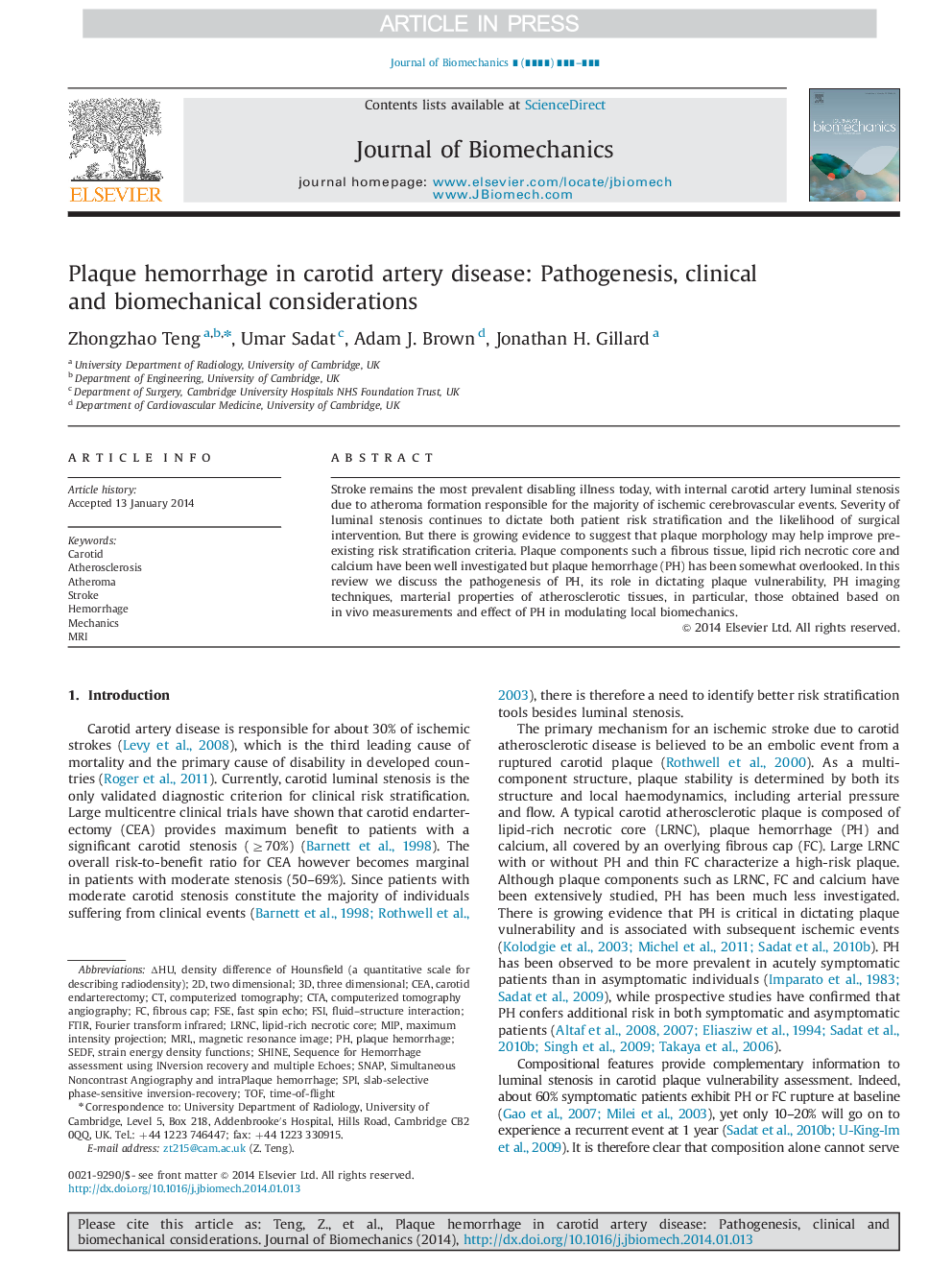| Article ID | Journal | Published Year | Pages | File Type |
|---|---|---|---|---|
| 10432217 | Journal of Biomechanics | 2014 | 12 Pages |
Abstract
Stroke remains the most prevalent disabling illness today, with internal carotid artery luminal stenosis due to atheroma formation responsible for the majority of ischemic cerebrovascular events. Severity of luminal stenosis continues to dictate both patient risk stratification and the likelihood of surgical intervention. But there is growing evidence to suggest that plaque morphology may help improve pre-existing risk stratification criteria. Plaque components such a fibrous tissue, lipid rich necrotic core and calcium have been well investigated but plaque hemorrhage (PH) has been somewhat overlooked. In this review we discuss the pathogenesis of PH, its role in dictating plaque vulnerability, PH imaging techniques, marterial properties of atherosclerotic tissues, in particular, those obtained based on in vivo measurements and effect of PH in modulating local biomechanics.
Keywords
MRI,MIPAtheromaplaque hemorrhageFSECTATOFSPIFSICeAAtherosclerosiscomputerized tomography angiographyfast spin echoMRICarotid endarterectomyFourier transform infraredMagnetic resonance imageFluid–structure interactioncomputerized tomographyHemorrhagetwo dimensionalTime-of-Flight three dimensionalStrokeSHINESNAPMaximum Intensity ProjectionFTIRMechanicsLipid-rich necrotic coreCarotidFibrous cap
Related Topics
Physical Sciences and Engineering
Engineering
Biomedical Engineering
Authors
Zhongzhao Teng, Umar Sadat, Adam J. Brown, Jonathan H. Gillard,
